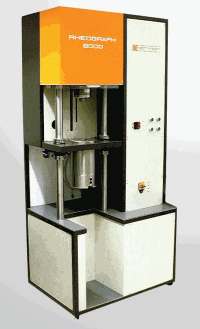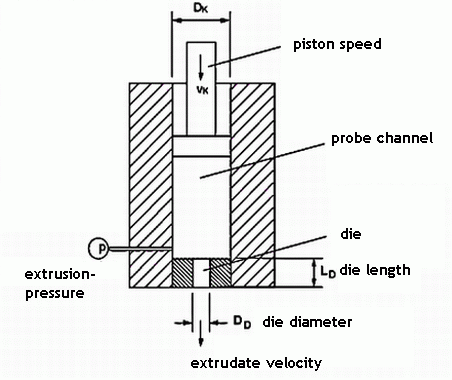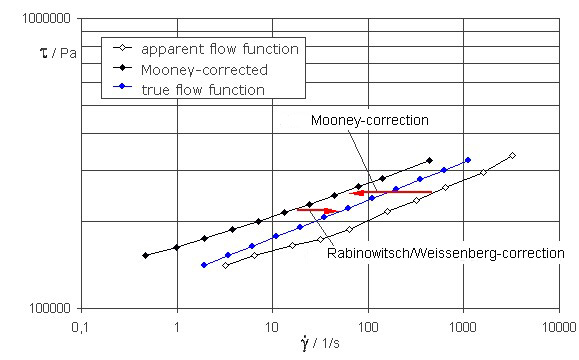During manufacturing, processing or application fluids are often exposed to flow fields with high shear rates (> 10 3 s - 1). For successful polymer processing the knowledge of the respective shear viscosity at typical process relevant (mostly high) shear rates is mandatory. Widely used application techniques like surfacing or painting, but even more industrial high speed coating processes are dominated by high shear rates. Capillary viscometry is the appropriate tool to characterize flow properties of almost all technically relevant fluids under high shear conditions (up to 106 s - 1) and process relevant temperatures (up to 400°C).
Operating PrincipleThe fluid is forced to flow through a capillary of defined length L and radius R at a controlled volumetric flow rate corresponding to a constant shear rate. The resulting extrusion pressure is proportional to the viscosity of the fluid. By using different die geometries a wide range of shear rates and viscosities can be covered.


Fig. 1 Commercial capillary viscometer (Rheograph 6000, Göttfert) and schematic drawing of the operating principle
Specifications
|
Shear rate range: |
|
|
Temperature range: |
|
|
Sample volume: |
|
Applications
- Industrial high speed coating technologies
- Layout of extrusion processes
- Processing of ceramic suspensions and pastes
The analysis of capillary measurements begins with symplifying assumptions which can be corrected additionally:
- Elastic effects and elongational viscosity can be estimated from measurements with different dies with the same radius but different length (Bagley-correction, Cogswell).
- Deviations from the Newtonian flow profile are accounted for using the so-called Rabinowitsch-Weissenberg method.
- Wall slip effects can be extracted from extrusion experiments with capillaries of different R but constant L/R (Mooney-method).

Fig. 2 Flow functions of a suspension (62% Pural Silicon oil AK 106) after different corrections
Literature
M. Schopferer; Untersuchungen zum Wandgleiten konzentrierter Suspensionen, Diplomarbeit, Universität Karlsruhe (TH), 2004
N. Willenbacher, H. Hanciogullari, H.G. Wagner, Chem. Eng. Technol. 20 (1997), 557-563
U. Sgodzaj, Messung der Viskositätsfunktionen von Fasersuspensionen am Kapillarrheometer, Studienarbeit, Universität Karlsruhe (TH), 1995
